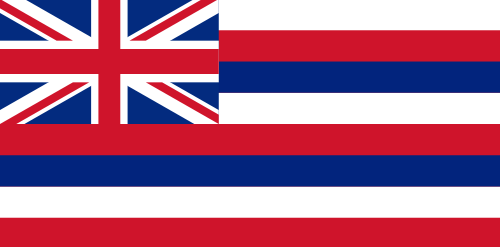United States
Hawaii : The Life Of The Land Is Perpetuated In Righteousness

Hawaii is a group of eight major islands, several atolls, numerous smaller islets, and seamounts in the central Pacific Ocean. Hawaii is the most recent state to join the United States, becoming our 50th state on August 21, 1959. Hawaii’s natural beauty, warm tropical climate, abundance of public beaches, oceanic surroundings make it a popular destination for tourists, surfers, biologists, and volcanologists. Hawaii is also home to two active volcanoes: Mauna Loa, on the island of Hawaii, and Kilauea, on the southeastern shore of Hawaii Island.
The state capital and largest city is Honolulu on the island of Oahu. Hawaii’s diverse natural scenery, warm tropical climate, abundance of public beaches, oceanic surroundings, and active volcanoes make it a popular destination for tourists, surfers, biologists, and volcanologists. Hawaii has over a million permanent residents, along with many visitors and U.S. military personnel. Its capital is Honolulu on the island of Oahu.
The Hawaiian Islands were first populated by Polynesians from Tahiti and other Pacific islands. Hawaii was later discovered by British explorer James Cook in 1778. The Kingdom of Hawaii was established in 1810, and the monarchy lasted until 1893 when Hawaii was annexed by the United States. Hawaii became a U.S. territory in 1898 and was Hawaii’s first non-territorial state in 1959.
Hawaii is a racially diverse state. According to the 2010 Census, Hawaii’s population was about 60% Asian (including Native Hawaiian and other Pacific Islander), 22% White, 10% Hispanic or Latino, 2% Black or African American, and 1% from two or more races. The largest ethnic groups are Japanese (24%), Filipino (18%), Chinese (13%), Caucasian or White (10%), and Native Hawaiian and Other Pacific Islander (9%).
Since Hawaii is located in the middle of the Pacific Ocean, it was not subject to the Jim Crow laws that segregated public facilities in the Southern United States. However, Hawaii did have its own version of Jim Crow, which segregated Hawaii’s public schools, beaches, and parks. These segregation laws were not ended until the 1960s.
Racism in Hawaii has a long history. Native Hawaiians were discriminated against by the Hawaiian monarchy, and after Hawaii was annexed by the United States, they were further marginalized by American institutions and laws. Japanese immigrants were also subject to racism, both from Hawaii’s white majority and from other Asian immigrant groups. Chinese immigrants were also discriminated against, and they were often used as strikebreakers in Hawaii’s labor unrest.
After World War II, Hawaii became a more racially diverse place with the influx of military personnel and tourists. However, racism persisted, and Hawaii’s white minority held on to power through economic and political control. In the 1960s, Hawaii’s Civil Rights Movement challenged racial segregation and discrimination, and Hawaii’s people of color began to gain more political power.
Hawaii, a place often associated with paradise and tropical beauty, is not exempt from the pervasive issue of racism. The history of Hawaii is complex, with a long legacy of colonialism, which has contributed to racism against the Indigenous people of Hawaii, known as Native Hawaiians, and other ethnic minorities.
First, it is important to understand the history of Hawaii. In the late 18th century, Western explorers, including Captain James Cook, arrived in Hawaii and brought with them new diseases that decimated the Native Hawaiian population. In 1893, a group of American businessmen, with the support of the United States government, overthrew the Hawaiian monarchy and established a republic. In 1898, Hawaii was annexed by the United States as a territory and later became the 50th state in 1959.
This history of colonization and forced assimilation has contributed to the marginalization and discrimination of Native Hawaiians. They have experienced loss of land, language, and culture, as well as limited access to education and employment opportunities. Furthermore, Native Hawaiians have faced discrimination in the criminal justice system, as they are overrepresented in prisons and jails.
In addition to discrimination against Native Hawaiians, racism against other ethnic minorities also exists in Hawaii. One example is the mistreatment of Filipino plantation workers, who were brought to Hawaii in the early 1900s. They were paid low wages and subjected to poor living conditions, with many suffering from physical and emotional abuse.
Furthermore, Asians in Hawaii, including Japanese, Chinese, and Korean Americans, have faced discrimination, particularly during World War II, when Japanese Americans were forcibly removed from their homes and placed in internment camps.
Although Hawaii is one of the most diverse states in the United States, with a population that is over 35% Asian and over 20% Native Hawaiian or Pacific Islander, racism still exists. Stereotypes and prejudices persist, and there is a lack of representation of ethnic minorities in positions of power and decision-making.
Efforts to address racism in Hawaii are ongoing. Organizations such as the Native Hawaiian Legal Corporation and the Hawaii Civil Rights Commission work to protect the rights of marginalized communities and promote equality. Education and awareness initiatives, including cultural competency training for public employees, are also being implemented.
In conclusion, racism in Hawaii is a complex issue that is rooted in the history of colonization and continues to affect Native Hawaiians and other ethnic minorities. While progress is being made to address discrimination and promote equality, more work needs to be done to dismantle systemic racism and ensure that all individuals are treated with respect.












You must be logged in to post a comment Login